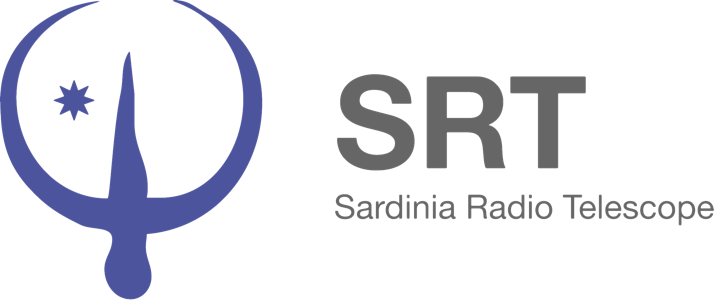Project
Backends
The frontend outputs are connected to the backends either by coaxial cables or optical fibers depending on whether the backend is located in the main building or below the dish. Currently, the following backends designed for specific scientific activities are available at the site:
- Total power: formed by 14 voltage-to-frequency converters to digitize the detected signals. Different IF inputs can be selected from three focal points. The system can be adjusted to select different bandwidths (maximum bandwidth: 0.1 - 2.1 GHz) and to modify the attenuation level.
- Digital Filter Bank mark 3: this is a FX correlator developed by the Australia Telescope National Facility, allowing full-Stokes observations. It has four inputs with 1024 MHz maximum bandwidth each and 8-bit sampling for a high dynamic range. The DFB3 is suitable for precise pulsar timing and search, spectral line and continuum observations with a high time resolution. It allows up to 8192 spectral channels, to counter the effects of interstellar dispersion when operated in pulsar mode, and for power spectrum measurements in spectrometer mode.
- Xarcos: this is a narrowband spectropolarimeter with 8x2 input channels. The working band is 135-240 MHz and the maximum number of spectral channels is 2x2048 per polarization, per output channel. The instantaneous bandwidth ranges between 0.488 and 62.5 MHz and the maximum effective spectral resolution is ~500 Hz.
- Digital Base Band Converter: this is a digital platform based on a flexible architecture, composed of four ADC boards 1 GHz bandwidth each and four Xilinx FPGA boards for data processing. The platform is designed mainly for VLBI experiments; however, a wideband spectrometer has been developed for different purposes.
- ROACH: digital board configured to provide 32 complex channels of 16 MHz each (for a total bandwidth of 512 MHz). This backend is adopted for pulsar observations, in particular in the context of LEAP (The Large European Array for Pulsars).
- SARDARA (SArdinia Roach2-based Digital Architecture for Radio Astronomy): wideband, multi-feed, and reconfigurable digital platform, whose preliminary setup was used in the early science program of the SRT in 2016. SARDARA is capable of covering as many observing modes of a single-dish radio telescope as possible: continuum, polarimetry, spectroscopy, high-time resolution for pulsars and fast transients.
